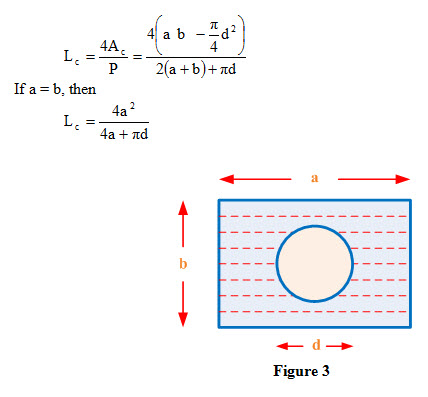Site pages
Current course
Participants
General
Module 1. Basic Concepts, Conductive Heat Transfer...
Module 2. Convection
Module 3. Radiation
Module 4. Heat Exchangers
Module 5. Mass Transfer
Lesson 13. Dimensional analysis of free and forced convection
Empirical Relations for Free and Forced Convection
1. Free Convection:
In case of free convection, heat transfer coefficient or Nusselt is expressed as
Nua = h L/ k = f (Gr , Pr)
Where
Nua is average Nusselt Number
Gr is Grashoff number
Pr is Prandtl Number
A) For Vertical Plates and Cylinders
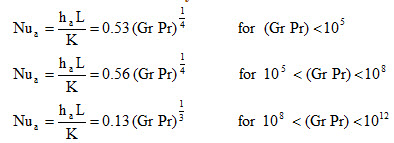
where
L is Characteristic length and it is the height of the plate or cylinder
ha is average heat transfer coefficient.
Gr is Grashoff Number
B) Horizontal Cylinders

Where
L is Characteristic length and in this case it is the diameter of the cylinder
ha is average heat transfer coefficient.
Gr is Grashoff Number
C) Horizontal Square or Circular Plates
For horizontal hot surface facing upward or cold surface facing downward.

For horizontal hot surface facing downward or cold surface facing upward.

Where
L is Characteristic length and in case of square plate it is the side of the plate
L is Characteristic length and in case of circular plate it is the diameter
ha is average heat transfer coefficient.
Gr is Grashoff Number
The properties of the fluid should be calculated at the temperature 
Where Ts = Plate surface temperature Tf = Fluid temperature.
2. Forced Convection
In case of forced convection, heat transfer coefficient or Nusselt is expressed as
Nux= f (x*, Rex , Pr)
Subscript ‘x’ has been added to emphasize our interest in conditions at a particular location on the surface.
Where
Nux is local Nusselt Number
Rex is local Reynolds Number
![]()
Nua = f (ReL , Pr)
Subscript ‘a’ indicates an average distance from x*= 0 to the location of interest.
Where,
Nua is average Nusselt Number
ReL is Reynolds number at the location of interest
(A) Flow of fluid over a flat surface at constant temperature
For laminar flow over flat plate which is valid for ReL < 5 x 105.

where ha is average heat transfer coefficient.
hx is the local heat transfer coefficient.

If the flow condition on the flat plate is partly laminar and partly turbulent then for
i) Only Laminar region
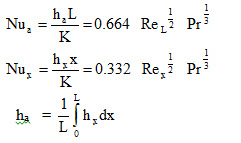
where, ha is average heat transfer coefficient.
hx is the local heat transfer coefficient.
ii) Only Turbulent region, which is valid for ReL > 5 x 105,
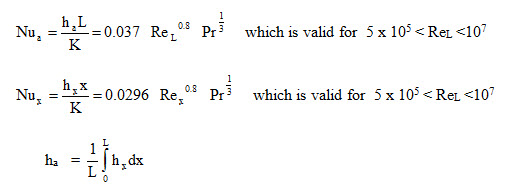
where ha is average heat transfer coefficient.
hx is the local heat transfer coefficient.
iii) Both Laminar and Turbulent region (mixed flow)

Where TS is plate surface temperature
Tf is fluid temperature
(B) Fluid is flowing inside the tube or through the annulus

Where Ti and To are the inlet and outlet temperatures of the fluid and
Ts is surface temperature of the tube.
Characteristic Length or Equivalent Diameter (Lc or De):
Equivalent diameter is usually expressed by the following equation

Where Ac = Cross-sectional Area and P = Perimeter.
So for circular tube De = D (inner diameter of the tube). The equivalent diameter is also known as characteristic length. The characteristic lengths of a few geometries are given below.
1) The fluid is flowing through a rectangular duct as shown in Figure 1, then
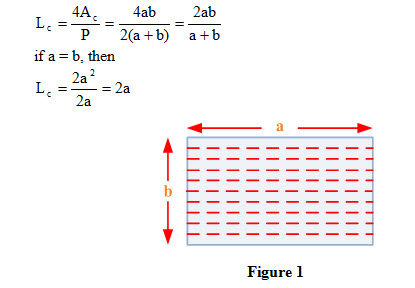
2) If the fluid is flowing through the annulus as shown in Figure 2, then

3) If the fluid is flowing through the annulus as shown in Figure 3, then

4) If the fluid is flowing through the annulus as shown in Figure 4, then
